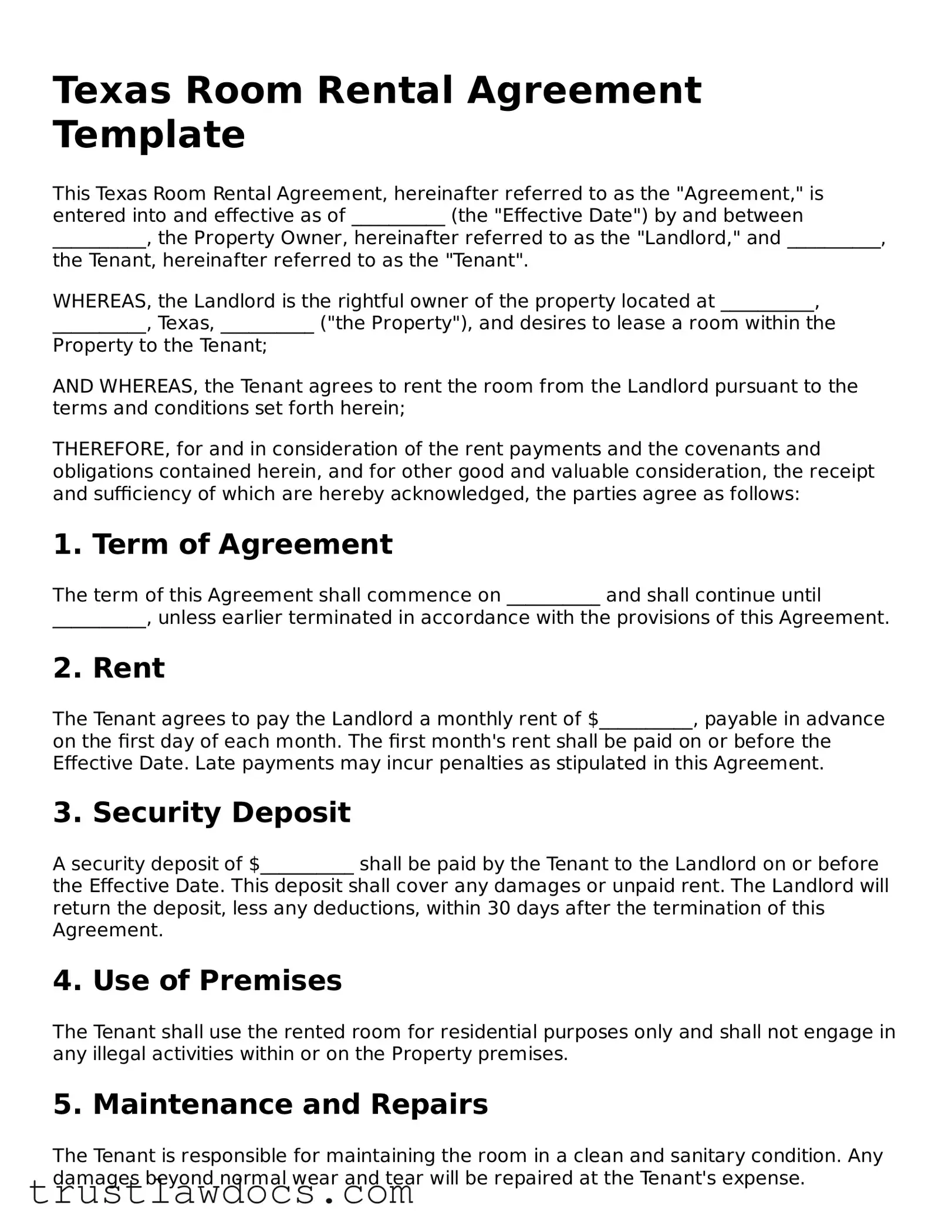Texas Room Rental Agreement Template
This Texas Room Rental Agreement, hereinafter referred to as the "Agreement," is entered into and effective as of __________ (the "Effective Date") by and between __________, the Property Owner, hereinafter referred to as the "Landlord," and __________, the Tenant, hereinafter referred to as the "Tenant".
WHEREAS, the Landlord is the rightful owner of the property located at __________, __________, Texas, __________ ("the Property"), and desires to lease a room within the Property to the Tenant;
AND WHEREAS, the Tenant agrees to rent the room from the Landlord pursuant to the terms and conditions set forth herein;
THEREFORE, for and in consideration of the rent payments and the covenants and obligations contained herein, and for other good and valuable consideration, the receipt and sufficiency of which are hereby acknowledged, the parties agree as follows:
1. Term of Agreement
The term of this Agreement shall commence on __________ and shall continue until __________, unless earlier terminated in accordance with the provisions of this Agreement.
2. Rent
The Tenant agrees to pay the Landlord a monthly rent of $__________, payable in advance on the first day of each month. The first month's rent shall be paid on or before the Effective Date. Late payments may incur penalties as stipulated in this Agreement.
3. Security Deposit
A security deposit of $__________ shall be paid by the Tenant to the Landlord on or before the Effective Date. This deposit shall cover any damages or unpaid rent. The Landlord will return the deposit, less any deductions, within 30 days after the termination of this Agreement.
4. Use of Premises
The Tenant shall use the rented room for residential purposes only and shall not engage in any illegal activities within or on the Property premises.
5. Maintenance and Repairs
The Tenant is responsible for maintaining the room in a clean and sanitary condition. Any damages beyond normal wear and tear will be repaired at the Tenant's expense.
6. Governing Law
This Agreement shall be governed by and construed in accordance with the laws of the State of Texas.
7. Entire Agreement
This Agreement constitutes the entire agreement between the parties pertaining to its subject matter. It supersedes all prior agreements, understandings, negotiations, and discussions, whether oral or written, of the parties.
Signatures
IN WITNESS WHEREOF, the parties hereto have executed this Agreement as of the date first above written.
Landlord's Signature: __________
Tenant's Signature: __________
